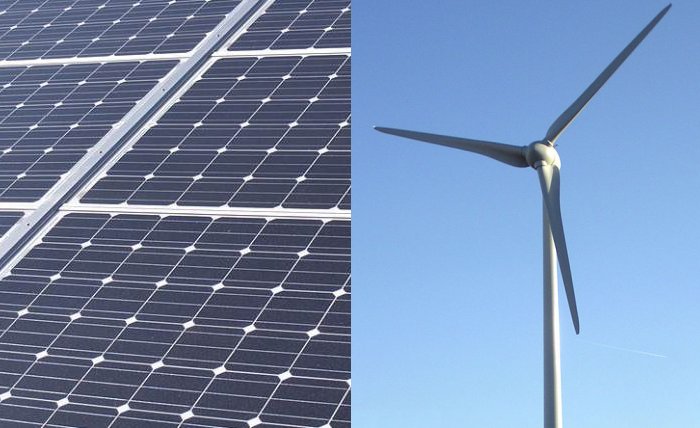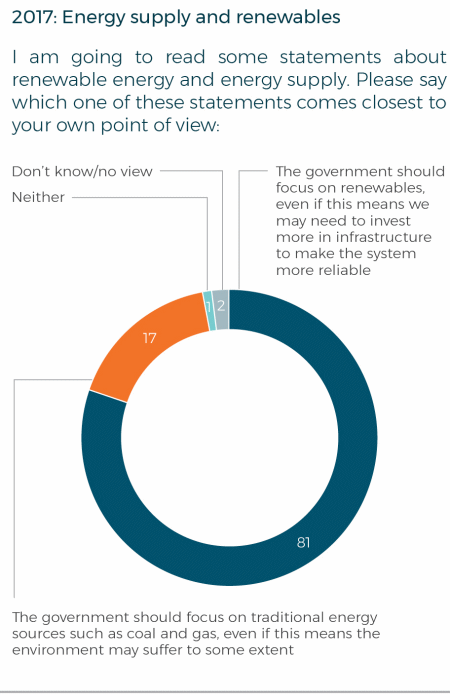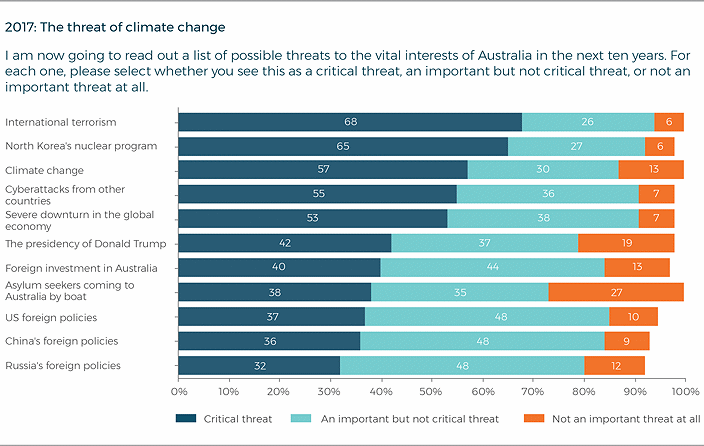
Solar panel image : Public Domain | Wind turbine image: Public Domain
Poll results just released indicate an overwhelming majority of Australians want to see a greater government focus on renewable energy, even if it costs more.
The latest Lowy Institute Poll results show 81% of Australians want the government to ‘focus on renewables, even if this means we may need to invest more in infrastructure to make the system more reliable’.
Just 17% believe the government should focus on energy sources such as coal and gas.
Alex Oliver, Director of the Institute’s polling program, says this year’s results align with previous findings of preference for alternative energy sources.
In a related article published on the Sydney Morning Herald, Ms. Oliver also stated the results were surprising given the poll was run while events such as the state-wide blackout in South Australia and the impacts of New South Wales’ heatwave on electricity supplies were still fresh in people’s minds.
The poll also indicated climate change is becoming more of a concern for Australians, with the majority seeing it as a serious threat. 54% agree that ‘global warming is a serious and pressing problem [and] we should begin taking steps now even if this involves significant costs’. This view was up 18 points compared to 2012. Only 15% felt climate change did not pose an important threat.
The issue of climate change was ranked number three of top concerns in the poll, behind international terrorism and North Korea’s nuclear weapons program.
The 2017 Lowy Institute Poll was a nationally representative telephone survey of 1200 Australian adults conducted between 1 and 21 March 2017 and full results will be released on June 21. The Institute is an independent, nonpartisan international policy think tank located based in Sydney.
The results come just prior to release of the Independent Review into the Future Security of the National Electricity Market final report, also known as the “Finkel Review”. Chair of the Review Panel is Australia’s Chief Scientist, Dr. Alan Finkel.
Fossil fuels are continuing to fall out of favour with Australians not just due to the effects of burning them, but also the impacts associated with how they are extracted. A survey we covered last month indicated twice the number of Australians support moratoriums on fracking for coal seam gas compared to those who oppose them.



 RSS - Posts
RSS - Posts



Hi Finn,
I just install solar evac.hot water with timer I’m bit confuse what time I need to put my timer on ..at the moment I time between 1030 to 230 my shoulder rate and my peak start at 3pm and also the electrician install the timer said to my partner to switch it off on summer which one I need to switch off the main switch or the timer?i have pv panels for electricity as well…and also is the evac.solar hot water(electric boast) self heated,?example if timer boast at set at 1030 to 230 what’s happening with solar tube,doesn’t make any sense,do I need to boast it later?
Hello Gina, Ronald here.
Your solar hot water system will only use the electric boost if the water isn’t hot enough. Because of this, you may want to set the timer to start later than 10:30 to give the sun more time to heat the water before the electric boost comes on — if it’s needed. Because your peak rate starts at 3:00 there is no reason not to set the timer to turn off then or just before then. You could try setting the timer from 12:00 to 3:00, but if you find yourself running out of hot water in winter you’ll want to set it earlier.
Another option is, if you have a low off-peak rate at night, to set it so it turns on then. This option will probably result in more grid electricity being used to heat water, but it will be low cost electricity. So it may be a little worse for the environment, but may not be worse for your electricity bill. It’s also a good option to try if you find yourself running out of hot water.
Turning your electric boost off in summer can save you some electricity use, but it won’t be much, as it will rarely be needed in summer. If you switch off the electric boost in summer, do it at the main switch.
Having the timer for your solar hot water system set from 10:30 to 2:30 isn’t bad. Because your peak rate starts at 3:00 there is no real reason not to set the timer to stop then or just before. If you are very focused on saving electricity then you can set the timer to start at a later point so sunlight will have had more time to heat the water before the electric boost comes on. So you could set it from say 12:00 to 3:00 but if you find yourself running out of hot water you’ll need to set the timer earlier.
Having the timer come on during the day allows your PV system to contribute its output to the hot water system. The problem is, your hot water system will probably only need to use electricity when it is cloudy and your solar PV won’t be producing a lot of energy at that time. But if you have a large PV system and you are often not at home during the day it can still contribute a significant amount of electricity.
If you have a low off-peak rate at night, then you may prefer to set the timer to turn on then. This method will probably use more electricity for heating water, but it will be low cost electricity. You may want to try it if having the timer set to turn on during the day doesn’t work for you.
You can turn the
Ok so in Victoria the new FIT regime regime comes into play from 1/07/2018. 3 Tariffs apply….Off peak: 10.00pm to 7.00 am FIT 7.1 cents per KWH….Shoulder: 7.00 am to 3.00pm; 9.00pm to 10.00 pm FIT 10.3 cents per KWH (7.00pm to 10 pm weekend) and the ” mother lode” Peak 3.00 pm to 9.00pm. FIT 29.00 cents per KWH (No peak on weekends). Now before I run out and turn the house more Westerly, the Retailers get the first year off: the Essential Services Commission (ESC) has made the variable tariff s voluntary for the first year ( for Retailers ) and can offer an alternative FIT rate of 9.9 cents. down from the 11.3 cents of 2017/8. I have already received my “dear Rod” letter from Origin Energy advising the new 9.9 cents FIT and omitting any mention at all about proposed varianle tariffs. Not a word.